Starbuck Supply Chain Strategy
doc
keyboard_arrow_up
School
Federal Science and Commerce College, New Lala Rukh, Wah Cantt *
*We aren’t endorsed by this school
Course
MISC
Subject
Business
Date
Nov 24, 2024
Type
doc
Pages
22
Uploaded by Emmanuel36
STARBUCKS SUPPLY CHAIN STRATEGY
Student’s Name
Professors Name
Institutional Affiliation
Due date
2
Table of Contents
Introduction
.................................................................................................................................................
3
Supply Chain of Starbucks
......................................................................................................................
3
Evaluation
...................................................................................................................................................
4
Strengths
..................................................................................................................................................
4
Weaknesses
..............................................................................................................................................
6
Opportunities
...........................................................................................................................................
7
Threats
.....................................................................................................................................................
8
Resource-based View
..............................................................................................................................
9
Resource Dependence Theory
...............................................................................................................
10
Transaction Cost Theory (TCT)
.............................................................................................................
10
Recommendations
.....................................................................................................................................
11
Conclusion
.................................................................................................................................................
13
References
.................................................................................................................................................
15
3
Starbucks Supply Chain Strategy
Introduction
A supply chain is an end-to-end movement of products and information in an
organization. According to Tjokrosaputro et al. (2020), how firms manage their suppliers affects
the company’s product cost, capital requirements, service perception, and speed to market. An
adequate supply chain strategy must account for the interaction of customers, suppliers,
economic factors, and technological developments (Alcorn, 2020). However, an enterprise must
have a unique worth or minimum requirement it has to meet for clients to consider it as an option
(Sutton et al., 2021). The value proposal allows businesses to connect and combine supply chain
drivers, such as products, expenses, management, and technology. Managers must ensure the
strategies promote organizational efficiency (Lombardi et al., 2021). The analysis focuses on
Starbucks' supply chain strategy in the UK. The purpose of the report is to discuss the Starbucks
UK’s coffee supply strategy. I illustrated the supply chain scope and evaluated it through SWOT
analysis and gap identification.
Supply Chain of Starbucks
Starbucks is a multinational coffeehouse and roaster chain located in different nations.
The wave of coffee culture in the UK emanated from Starbucks’ varieties, such as espresso,
instant coffee, and caffe latte (Leblanc, 2019). The company used an integrated supply chain,
with representatives among coffee growers. The organization perceived that integration with
farmers motivated the producers to produce identical flavour and quality standards (Neville,
2021). Nonetheless, Starbucks find it challenging to corporate with all coffee suppliers and make
them feel integrated (Gaille, 2021). Moreover, competitors like Costa coffee force Starbucks to
Your preview ends here
Eager to read complete document? Join bartleby learn and gain access to the full version
- Access to all documents
- Unlimited textbook solutions
- 24/7 expert homework help
4
reduce its supply chain expenses (Kelso, 2022). The research conducts a SWOT analysis,
assesses gaps, examines theories, and offers recommendations.
Selected Supply Chain Diagram
External Integration
Upstream
Internal Integration
External Integration
Down stream
Upstream
Focal Firm
Downstream
4
th
Tier
3
rd
Tier
2
nd
Tier
1
st
Tier
1
st
Tier
2
nd
Tier
3
rd
Tier
Cup
branding
Solo
Cup
Co.
Plastic
Producer
Distributors
(Gist)
Coffee
Shops
Consu
mers
Starbucks
UK Coffee
Supply
Chain
Coffee
Beans
Processor
Coffee
Farmer
(Brazil,
Guentemala)
Cup
Brandin
g
Internat
onal
Paper Co.
Paper
producers
Product/Service
Fund/Money
Information
5
Table 1:
Areas of Focus in the Starbucks UK’s Coffee Supply Chain Strategy
Supply
Demand
Integrated vertical supply chain
Training programs and cost saving measures
Enterprise resource planning software
Coffee from local distributors
Partnership with Gist
Company stores operation and workers
retention
Evaluation
Table 2: Summary of the
SWOT Analysis
Internal
Strengths
Weaknesses
- Sustainable sourcing
- Coffee and farmers’ equity (CAFÉ)
- Enterprise resource planning software
- Adaptable and user-friendly system
-
Dependent on company-operated stores
- Cannot attract price-sensitive consumers
- Does not attract clients with dietary preferences
- Vulnerable to price fluctuations
External
Opportunities
Threats
- Use multiple distribution channels
- Partner with Gist, Solo Cup Manufacturers, and
International Paper manufacturers
- Expand into tea and specialty items supply
- Adverse weather events
- Government mandated-rules and policies
- Stiff competition from coffee distributors
- Economic uncertainties
Strengths
Starbucks uses sustainable sourcing to integrate ethical, social, and environmental
performance into the strategies for creating long-term suppliers relationship. The organization
established an integrated vertical supply chain that grows, harvests, dries, packs, blends, and
roasts coffee beans. However, how does the company ensure the farmers yield high-quality
products? According to Wang et al. (2022), Starbucks created Coffee and Farmer Equity (CAFÉ)
standards to make coffee farmers comply with ethical guidelines for sourcing farm goods.
6
Moreover, Starbucks coffee uses Enterprise Resource Planning to track, collect, and
analyze product and service data. The system updates purchases and billing at the point of origin,
eliminating the need for emailing orders and paper forms. Cooper and Nguyen (2020) also
reiterated that Enterprise Resource Planning lowers the lag time stores had to wait while
Starbucks assessed suppliers’ legislative compliance.
Starbucks is better positioned to handle sudden business fluctuations when receiving real-
time information. On the contrary, Starbucks does not have practical artificial intelligence and
transport management system to detect all the supply chain weaknesses (Mehrhoff, 2022). It
forces the firm to wait to undertake manual data analysis on information linked to supply chain
efficiency and business productivity. However, Starbucks can immediately update suppliers on
order backlogs (Chen & Liang, 2021). The company uses the information to adjust logistics
associated with cargo batches, product delivery, and consignments. Conversely, Starbucks should
install an artificial intelligence system to manage the supply chain and address potential
logistical inefficiency and redundancy.
Weaknesses
Starbucks UK depends on many company-operated stores, making it vulnerable to
operational costs. Pereira (2023) stated employee turnover affects Starbuck’s ability to manage
stores and offer high-quality services within the supply chain. Furthermore, the supply chain
costs make Starbucks' prices higher than the competitors'. The weakness of the firm is it cannot
attract price-sensitive clients. Stamford (2022) suggested the company justifies its expensive
services with high-quality coffee. Alternatively, costs linked to stores, for example, utilities, rent,
and labour, affect Starbucks' supply chain and profitability. Duque et al. (2019) claimed
Starbucks implemented training programs and cost-saving measures to mitigate store costs. On
Your preview ends here
Eager to read complete document? Join bartleby learn and gain access to the full version
- Access to all documents
- Unlimited textbook solutions
- 24/7 expert homework help
7
the other hand, the firm still operates many storehouses (Yip, 2022). Using franchise-owner
centers can assist the organization lower operational risks.
Moreover, the main product supply in Starbucks is coffee; therefore, the company cannot
attract clients with dietary preferences or restrictions. Pereira (2023) argued the organization
attempts to expand its supply chain to plant-based options, such as low-calorie, gluten-free, and
low-fat items. However, Starbucks still needs more product options compared to competitive
beverage retailers. The company needs to appeal to buyers with dietary specifications or those
seeking diverse services (Li, 2022). Coffee is vulnerable to price fluctuation due to weather
conditions, economic conditions, and disease outbreaks. Starbucks is at risk of losing customers
if coffee price increase (Pereira, 2023). However, the company has taken steps to mitigate the
problems, such as diverse supply chain sourcing, surcharges reduction, and farmers' training.
Opportunities
Starbucks' supply chain concentrates on coffee but has opportunities to explore specialty
items, including infused waters and teas. Gaille (2021) argued Starbucks could capitalise on
beverage options and explore various products. The strategy can be a model for expansion into
different markets. On the contrary, Starbucks will find it challenging to cater to the ever-
changing demands of the client base (Hadleigh, 2020). The company will need to consistently
gather customer feedback and rapidly develop the new product in the supply chain. The lessons
Starbucks has learned while connecting with diverse coffee distributors are vital in building
brand reputations.
Partnerships enable Starbucks to access new distribution channels. According to Pereira
(2023), Starbucks can use multiple distributors to meet its products' needs and demands.
Starbucks can use the supply chain of established corporations in the UK to cut costs. The
8
partnership is fundamental for co-branding and cross-promotion. Starbucks UK can partner with
Gist for cost-effective and flexible supply chain operations (Hadleigh, 2020). However, the
disadvantage is Starbucks will be liable for Gist’s supply risks and debts. Furthermore,
disagreements and friction between the partners may affect the supply chain operations. On the
other hand, coordination with innovative distributors unlocks synergies, lower environmental
impacts, and improves delivery schedules (Gist, n.d). Starbucks must look for partners that share
its values, cultures, and goals in supply management.
Threats
Staff turnover and labour conflict may jeopardise Starbucks' capacity to run its stores and
offer customer experience. Alcorn (2020) asserted competition among workers and strikes might
negatively impact Starbucks. Moreover, high employee turnover can affect the firm’s ability to
offer consistent client experience. However, Starbucks implemented training programs,
competitive compensation, and worker retention initiatives to lower labour disputes.
Nevertheless, economic uncertainties make it hard for Starbucks to offer high salaries because
customers opt for lower-priced coffee (Hadleigh, 2020). Market instability due to natural
calamities also affected the raw materials and input the organization used in production.
The supply chain change associated with weather events and failed coffee beans can lead
to significant problems for Starbucks. Alcorn (2020) indicated cost fluctuations in the coffee
products had extensive risks of shortfalls in Starbucks. Furthermore, the post-COVID-19 effect
on people’s buying habits leads to steep revenue drop-offs. However, by closing less significant
stores, Starbucks limited the financial resources required for its supply chain activities. Neville
(2021) stated Starbucks closed 100 stores in the UK in approximately 18 months. On the other
9
hand, Starbucks responded to government-mandated rules rather than monetary issues affecting
its supply chain operations.
Resource-based View
Starbucks interprets firm behaviour based on the competitive gains in the market. The
company supply chain focuses on production elements offering aggressive facets over
competitors (Lukovszki et al., 2021). However, Starbucks’s primary resource is coffee, and
feasible competitors can imitate the company's production process. The resource-based view
assumes that a corporation’s resources are diverse and immobile (Bhat and Sharma 2021).
Starbucks secures coffee beans from different suppliers as a strategy for owning the product’s
competitive advantage. Conversely, a company can only guarantee its market share if it has a
complicated supply chain (Sutton et al., 2021). Starbucks engaged in assets pooling to uphold a
collaborative mindset with its coffee distributors. Nevertheless, the resources must create value
for the firm and reduce the cost of supply chain operations.
Resource Dependence Theory
Resource dependence theory (RDT) advocates for inter-organisational governance as a
strategic way of responding to uncertain conditions. However, corporations may rely on other
companies for the required resources if they use the resource dependence theory. Durach et al.
(2021) stated that uneven interdependence in the relationship is fundamental for decreasing
environmental uncertainties. Starbucks forms supply chain relationships to fit the paradigm of
resource dependence (Sutton et al., 2021). Resource dependency theory limits a company's focus
on innovative actions to solve problems. Furthermore, transferring talents from one company to
another may lead to a conflict of interest (Seuring et al., 2022). Conversely, a relationship with
coffee growers and distributors can help Starbucks cope with economic instabilities.
Your preview ends here
Eager to read complete document? Join bartleby learn and gain access to the full version
- Access to all documents
- Unlimited textbook solutions
- 24/7 expert homework help
10
Transaction Cost Theory (TCT)
TCT focuses on the efficiency and cost-minimisation rationales for the corporation.
Starbucks engages in joint assignments to avoid opportunism and tracking expenses. Cooperative
tasks help organisations avoid internalizing activities not aligned with their skills (Kayed et al.,
2021). Starbucks collaborated with Uber eats to expand its service delivery to 11 cities in the UK
(Rayner, 2019). The action was to meet the demand of customers in the digital market. On the
other hand, Starbucks has to leverage Uber Eats' expertise to reach potential clients. The
company must create unique beverage and packaging solutions to deliver the same quality menu
to consumers (Rayner, 2019). Uber Eat lets Starbucks customers follow orders and track the
supplier's progress using mobile apps. However, the Starbucks culture of interacting with
customers at coffee stores conflict with Uber Eats technology-inclined business strategies.
Gaps
Rueda et al. (2017) argued Starbucks-associated CAFÉ concentrated on workers’ rights,
safety, and minimum wages rather than coffee quality. CAFÉ should give Starbucks a platform to
offer its suppliers special training and education. The company need to have close relationship
with coffee growers and monitor plantation techniques its suppliers use. It should also maintain
product quality and addresses worker shortage issues before it disturbs the supply chain.
Tjokrosaputro et al. (2020) argued that technology is challenging to partners whose apps
and websites are incompatible with Starbucks' systems. Nevertheless, the Enterprise Resource
Planning software is customer-designed to uphold adaptable and user-friendly functionality (Goh
et al., 2020, p.31). Moreover, the technology is upgradable; therefore, it grows with the company
and supply chain needs. The gap in the evaluation is it did not test the company software’s ability
to quickly and efficiently respond to changes. Starbucks undertakes real-time follow-up of its
11
supply chain and collects feedback using questionnaires to enhance its products. Chen and Liang
(2021) stated organizations that employ new data sources within the supply chain offer insight
into materials demand.
Further, Starbuck does not use local coffee suppliers to promote its products. Starbucks
selects suppliers in the local sales place with the intention of having low procurement logistics
and enhancing its popularity. Huang et al. (2020) argued a company that develops a supply chain
and products linked to local culture wins in customers’ favour. However, Starbucks may
experience negative local publicity when it terminates distributors' contracts. Moreover,
economic implications in a nation have high effects on the supply chain (Alibaba, 2020). The
chosen suppliers may entirely depend on Starbucks as their primary source of revenue and resist
the company’s innovative changes with the potential of affecting home-grown partnerships
(Mappesona, 2020). Starbucks needs to increase its capacity to develop, manage, and inspect
local suppliers to help them meet international standards.
Starbucks has no standardized ways for cooperating with suppliers who deliver coffee to
its UK stores. The action improved its bargaining power with distributors while negotiating
contracts. Starbucks was attentive to information sharing to improve coordination and make
consumers comfortable (Shrum, 2018). Conversely, a partnership involving asset allocation also
includes loss sharing. Starbucks must still integrate its supply management team into its partners'
business strategies (Kelso, 2022). The firm need to compromise its ways of undertaking business
to accommodate different coffee suppliers. The desire for Starbucks to cooperate with more than
300 coffee bean suppliers affects its standard requirements (Chen & Liang, 2021). The
organization must train all farmers to adhere to coffee sourcing guidelines (CSG).
12
Recommendations
Starbucks need to reform CAFÉ’s emphasis on coffee quality and promote data exchange
between the management and coffer farmers or suppliers. It should use the supply chain
operations reference model (SCOR) as a management tool for communicating and improving
decisions with customers and suppliers. The model addresses processes in the supply chain and
the best strategies to satisfy clients’ demands. Miharja et al. (2020) affirmed SCOR model could
assist Starbucks in fully leveraging capital investment, creating a supply chain roadmap, and
aligning its business functions. Nonetheless, Duque et al. (2019) perceived the SCOR framework
as time-consuming because it requires the company to elaborate the processes of planning,
sourcing, making, delivering, and returning products in all supply chain units. However,
Sunaryono (2022) indicated SCOR model determines business rules for measuring and
improving supply chain efficiency. Likewise, Starbucks can apply the SCOR framework to
manage suppliers’ networks, agreements, and performance.
Second, Starbucks can use the Zone of Strategic Fit as a balanced model for helping the
organization to meet design customer-friendly technology. According to Song et al. (2019),
Strategic Fit ensures the Enterprise Resource Planning software align to customers’ needs,
supplier’s requirements, and the company’s competitive approaches. However, Starbucks has to
understand client’s need uncertainties, procurement capabilities, and responsiveness. Supply
chain managers must comprehend clients’ scope, budget, and goals before executing products
purchase (Chen and Bei 2019, p.7). On the other hand, customers can be uncertain about what
they want; therefore, Starbucks should be able to guide clients within the procurement
capabilities (Turner et al., 2019, p.8). Critical customer requirements (CCR) are vital in
achieving strategic fit because they match customer needs with organizational abilities (Song et
Your preview ends here
Eager to read complete document? Join bartleby learn and gain access to the full version
- Access to all documents
- Unlimited textbook solutions
- 24/7 expert homework help
13
al., 2019). It is difficult for an organization to realise strategic fit, but the Starbucks supply chain
team will align its objectives with business goals.
Moreover, Starbucks can employ vertical integration and streamline its operations
through direct ownership of production stages. Yip (2022) stated an organization achieves
vertical integration by establishing distributors, suppliers, and retail locations. Starbucks can
work with 300000 coffee growers and make sure the suppliers meet international quality
standards (Yip, 2022). On the contrary, language barriers make it difficult for Starbucks to
communicate with farmers. Consequently, a coffee producer who received training programs
from Starbucks faces the challenges of overplanting or needing more workers to meet the
company guidelines (Jacoba, 2022). A company requires financial means to buy small actors in
the supply chain for the success of vertical integration. Nonetheless, partnerships with players at
all levels of the supply chain encourage steady growth. Vertical integration also increases the
production efficiency of an organization with significant resources.
Furthermore, Starbucks should mix profitability and aspirations for sustainability.
Starbucks Farmer Support Centers is assisting coffee growers in comprehending specific
fertilizers and nutrients for effective productivity (Stamford, 2022). On the other hand, fertilizers
act as sources of carbon emission and increase productivity only within a short period. Starbucks
also initiated open-source agronomy, where it grows climate-resistant trees on the same land
farmers cultivate coffee. Purcărea (2019) argued that employees and customers could resonate
with Starbuck values when it makes distribution networks and retail outlets sustainable. The
organization can green the supply chain through energy usage reduction and attain LEED
certification (Tsai, 2020, p. 5). Starbucks can initiate a carbon-neutral coffee roadmap through
investment in water conservation and regenerative agriculture.
14
Besides, Starbucks can establish megastores which will serve as an innovation laboratory
for the supply chain system. Leblanc (2019) stated systematic innovation support is an
opportunity to enhance customers’ experience. Starbucks set up Caring Unites Partners (CUP)
Fund to assist farmers in donating to coffee growers who faced natural disasters (Gozdan &
Sudolska, 2019). On the other hand, the company can start strategic partnerships which allow
people to pick up food during closing hours rather than store time (Yip, 2022). Starbucks can
also brand its stores in a way that connects suppliers with customers through local aesthetics
integration.
The dark side of Starbucks is the complexity associated with many outsourced
relationships and reduced synergies. However, the organization can get on track by simplifying
operations. Starbucks needs to organise its business and define roles and responsibilities in the
sector (van Baarle, 2022). Yip (2022) argued employees could accomplish multiple supply chain
duties instead of specialising in a specific unit. Nevertheless, Starbucks has to organise its supply
chain and focus on essential issues for overall company success (Stamford, 2022). The
application of scorecards will help the firm track the performance indicators in the supply chain.
The scorecards can also enable Starbucks to determine emerging issues among suppliers (Pavez
et al., 2021). Conversely, the company must align its supply chain activities with the third parties'
interests.
Conclusion
Starbucks utilized sustainable sourcing approaches to ensure its supply chain strategies
adhered to ethical standards. It created CAFÉ standards to ensure farmers maintained similar
flavour and quality. The enterprise resource planning network also tracked, collected, and
analysed data about its products and services. On the other hand, the technology was problematic
15
to partners who had incompatible applications. The weakness of Starbucks is it is not favourable
to price-sensitive customers. On the other hand, the companies argue its products are expensive
because they are high quality. Starbucks has the opportunity to use multiple distributors to satisfy
consumer demands. The problem is it will be liable for the partner’s supply chain risks and costs.
High staff turnover can also threaten the ability of Starbucks to operate its stores in the UK.
The organization should be agile, adaptable, and aligned with other suppliers. Starbucks
is well-positioned to tackle business fluctuations when it receives real-time data. Its alignment
with coffee distributors enhances its bargaining power. Moreover, Starbucks' supply chain and
products connect with local cultures to win clients’ interest. Conversely, there may be adverse
publicity if the company disagrees with community leaders. Furthermore, Starbucks needs to
focus on inter-organizational governance to respond to supply chain uncertainties. Its joint
venture must minimise costs and add expertise to the business.
The recommendation is Starbucks should utilise the chain operation reference model to
improve customers’ decisions. On the other hand, the SCOR framework is complex because it
requires planning, sourcing, and delivery of all supply chain units. Second, Starbucks can
employ a zone of strategic fit to meet its goals. Nevertheless, managers need to understand
consumers’ budgets before product execution. The organisation can initiate megastores as a
laboratory for innovations relevant to supply chain strategies. Starbucks’ Caring Unites Partners
(CUP) Fund can also promote how to interact with coffee growers and help them meet
international standards.
Your preview ends here
Eager to read complete document? Join bartleby learn and gain access to the full version
- Access to all documents
- Unlimited textbook solutions
- 24/7 expert homework help
16
References
Alcorn, C. 2020. Starbucks is closing up to 400 stores and expanding takeout options. CNN
Business.
https://edition.cnn.com/2020/06/10/business/starbucks-closing-400-
stores/index.html (6
February 2023)
Alibaba. 2020. Local vs global sourcing: The pros and cons. Seller Alibaba.
Bhat, R. and Sharma, V., 2021. Dimensionality and consequences of service innovation: An
empirical study of hospitality industry. Cogent Business & Management, 8(1),
p.1924931.
doi:10.1080/23311975.2021.1924931
Chen, A. and Liang, J. 2021. Analysis of Starbucks supply chain status based on 3A3S Model.
Journal of Economics and Public Finance 7 (42). pp.52-58. Doi:
10.22158/jepf.v7n4p52
Chen, Y.S.A. and Bei, L.T., 2019. Free the brand: How a logo frame influences the potentiality of
brand extensions. Journal of Brand Management, 26(4), pp.349-364. doi:10.1057/s41262-
018-0142-0
Cooper, M. and Nguyen, Q.T., 2020. Multinational enterprises and corporate tax planning: A
review of literature and suggestions for a future research agenda. International Business
Review, 29(3), p.101692.
doi:10.1016/j.ibusrev.2020.101692
Duque, D.F.M., Ríos, J.R. and Gómez, J.C.O., 2019. Operational supply chain risk identification
and prioritization using the SCOR model. Ingenieria y Universidad, 23(1), pp.1-13. doi:
https://doi.org/10.11144/Javeriana.iyu23-1.oscr
Durach, C.F., Kembro, J.H. and Wieland, A., 2021. How to advance theory through literature
reviews in logistics and supply chain management. International Journal of Physical
Distribution
&
Logistics
Management, 51(10),
pp.1090-1107.
https://www.emerald.com/insight/content/doi/10.1108/IJPDLM-11-2020-0381/full/html
17
Gaille, B. 2021. Starbucks SWOT Analysis. Small Business and Marketing Advice.
https://brandongaille.com/starbucks-swot-analysis/
(6 February 2023)
Gist.
Gist
and
starbucks
sign
extension
to
partnership.
https://www.gistworld.com/News/ArticleID/8/Gist-and-Starbucks-sign-extension-to-
partnership#:~:text=Steve%20Belke%2C%20Starbucks%20Vice%20President,our
%20store%20partners%20and%20our
. (Accessed 5 February 2023).
Goh, S.Y., Kee, D.M.H., Ooi, Q.E., Boo, J.J., Chen, P.Y., Alosaimi, A. and Ghansal, M., 2020.
Organizational culture at Starbucks. Journal of the Community Development in Asia
(JCDA), 3(2), pp.28-34. doi:
10.32535/jcda.v3i2.808
Gozdan, E. and Sudolska, A., 2019. Exploring Company’s Activities in the Field of CSR: The
Case of Starbucks. Journal of Corporate Responsibility and Leadership, 6(2), pp.29-47.
Hadleigh, S. 2020. How far could your business go with the right strategic partnership?
Powerlinx.
https://www.powerlinx.com/blog/strategic-partnership-business-growth/
(Accessed 5 February 2023)
https://seller.alibaba.com/businessblogs/pxxf9hls-local-vs-
global-sourcing-the-pros-and-cons
(6 February 2023)
Huang, Y., Han, W. and Macbeth, D.K., 2020. The complexity of collaboration in supply chain
networks. Supply Chain Management: An International Journal, 25(3), pp.393-410.
doi:10.1108/SCM-11-2018-0382
Jacoba, J., 2022. Starbucks strategic analysis.
University of Nebraska-Lincoln
, pp. 1-14.
https://digitalcommons.unl.edu/honorstheses/490/
environmental goals
Kayed, M.B., Kacker, M., Wu, R., Sadeh, F. and Lee-Chin, M., 2021. Channel governance
through brand equity: how brand equity shapes distribution channel structure, pp.1-94.
http://hdl.handle.net/11375/27259
18
Kelso, A. 2022. Starbucks to spend $1.5B on diverse suppliers by 2030. Supply Chain Drive.
https://www.supplychaindive.com/news/starbucks-diverse-supplier-program/617217/
(6
February 2023)
Leblanc, Rick. 2019. How Starbucks changed their supply chain management. Live About.
https://www.liveabout.com/how-starbucks-changed-supply-chain-management-4156894
(Accessed 4 February, 2023)
Li, C., 2022, December. Comparison of the Market for Starbucks and Luckin—How Did Luckin
Rise. In 2022 7th International Conference on Modern Management and Education
Technology (MMET 2022) (pp. 109-115). Atlantis Press. doi:
10.2991/978-2-494069-51-
0_14
Lombardi, V., Chidiac, N.T. and Record, B.C., 2021. Starbucks coffee corporation’s marketing
response to the COVID-19 pandemic. Innovative Marketing, 17(2), p.177.
doi:10.21511/im.17(2).2021.16
Lukovszki, L., Rideg, A. and Sipos, N., 2021. Resource-based view of innovation activity in
SMEs: an empirical analysis based on the global competitiveness
project. Competitiveness Review: An International Business Journal, 31(3), pp.513-541.
https://www.emerald.com/insight/content/doi/10.1108/CR-01-2020-0018/full/html
Mappesona, H., Ikhsani, K. and Ali, H., 2020. Customer purchase decision model, supply chain
management and customer satisfaction: Product quality and promotion analysis. Int. J
Sup. Chain. Mgt Vol, 9(1), p.592.
http://download.garuda.kemdikbud.go.id/article.php?
article=1632768&val=13549&title
=Customer%20Purchase%20Decision%20Model
%20Supply%20Chain%20Management%20and%20Customer%20Satisfaction
%20Product%20Quality%20and%20Promotion%20Analysis
Your preview ends here
Eager to read complete document? Join bartleby learn and gain access to the full version
- Access to all documents
- Unlimited textbook solutions
- 24/7 expert homework help
19
Mehrhoff, J. 2022. How real-time data can help with decision making in supply chain. Orkestra.
https://www.orkestrascs.com/blogs/how-real-time-data-can-help-with-decision-making-
in-supplychain#:~:text=The%20value%20of%20real%2Dtime,business%2Denhancing
%20decisions%20without%20delay
. (6 February 2023)
Miharja, R., Kaltum, U., Primiana, I. and Sarasi, V., 2020. Evaluation of SME Supply Chain
Using Methods Supply Chain Operation Reference (SCOR)(Case Study on Borondong
Industry SMEs). KnE Social Sciences, pp.1026-1033. doi:10.18502/kss.v4i6.6659
Neville, S. 2021. Starbucks UK extends losses as pandemic takes its toll. Evening Standards.
https://www.standard.co.uk/news/uk/companies-house-government-middle-east-
european-turkey-b941303.html (6
February 2023)
Pavez, I., Kendall, L.D. and Laszlo, C., 2021. Positive-impact companies: Toward a new
paradigm of value creation. Organizational Dynamics, 50(4), pp.1-11. Available at:
https://www.researchgate.net/profile/Ignacio-Pavez/publication/347383839_Positive-
impact_companies_Toward_a_new_paradigm_of_value_creation/links/61b36b2ffd2cbd7
2008ec525/Positive-impact-companies-Toward-a-new-paradigm-of-value-creation.pdf
Pavez, I., Kendall, L.D. and Laszlo, C., 2021. Positive-impact companies: Toward a new
paradigm
of
value
creation. Organizational
Dynamics, 50(4),
pp.1-11.
doi:10.1016/j.orgdyn.2020.100806
Pereira, D. 2023. Starbucks SWOT analysis. The Business Model Analyst. Available at:
https://businessmodelanalyst.com/starbucks-swot-analysis/
( Accessed 4 February 2023).
Purcărea, T., 2019. Retailers’ Struggling to Adapt to the Changing Consumer, pp. 1-15.
http://crd-aida.ro/RePEc/rdc/v10i3/4.pdf
20
Rayner, A. 2019. Starbucks Delivers expands across the UK, powered by Uber Eats. Starbucks
Stories and News.
https://stories.starbucks.com/emea/stories/2019/starbucks-delivers-
expands-across-the-uk-powered-by-uber-eats/
(6 February 2023)
Rueda, X., Garrett, R.D. and Lambin, E.F., 2017. Corporate investments in supply chain
sustainability: Selecting instruments in the agri-food industry. Journal of cleaner
production, 142, pp.2480-2492.
doi:10.1016/j.jclepro.2016.11.026
Seuring, S., Aman, S., Hettiarachchi, B.D., de Lima, F.A., Schilling, L. and Sudusinghe, J.I.,
2022. Reflecting on theory development in sustainable supply chain
management. Cleaner
Logistics
and
Supply
Chain, 3,
p.100016.
doi:10.1016/j.clscn.2021.100016
Shrum, A. 2018. A look inside Starbucks’ seamless supply chain. Dynamic Inventory.
https://www.dynamicinventory.net/starbucks-supply-chain-management/
(6 February
2023)
Song, H., Wang, J. and Han, H., 2019. Effect of image, satisfaction, trust, love, and respect on
loyalty formation for name-brand coffee shops. International Journal of Hospitality
Management, 79, pp.50-59.
doi:10.1016/j.ijhm.2018.12.011
Stamford. 2022. Starbucks announces coffee-specific environmental goals. Starbucks Stories and
News.
https://stories.starbucks.com/stories/2021/starbucks-announces-coffee-specific-
environmental-goals/
(Accessed 4 February 2023).
Sunaryono, S., Rizaldy, R. and Zulimi, Z., 2022. Supply Chain Operation Reference Analysis for
the Village Superior Product E-Commerce of BUMDes. Logistic and Operation
Management
Research
(LOMR), 1(2),
pp.74-85.
Available
at:
https://journals.researchsynergypress.com/index.php/lomr
21
Sutton, T., Devine, R.A., Lamont, B.T. and Holmes Jr, R.M., 2021. Resource dependence,
uncertainty, and the allocation of corporate political activity across multiple
jurisdictions. Academy
of
Management
Journal, 64(1),
pp.38-62.
doi:10.5465/amj.2017.1258
Tjokrosaputro, M. and Cokki, C., 2020, June. The role of social influence towards purchase
intention with value perception as mediator: A study on starbucks coffee as an
environmentally friendly product. In 8th International Conference of Entrepreneurship
and Business Management Untar (ICEBM 2019) (pp. 183-189). Atlantis Press.
doi:
10.2991/aebmr.k.200626.034
Tsai, P.H., Lin, G.Y., Zheng, Y.L., Chen, Y.C., Chen, P.Z. and Su, Z.C., 2020. Exploring the
effect of Starbucks' green marketing on consumers' purchase decisions from consumers’
perspective. Journal of Retailing and Consumer Services, 56, p.102162.
doi:10.1016/j.jretconser.2020.102162
Turner, M.R., McIntosh, T., Reid, S.W. and Buckley, M.R., 2019. Corporate implementation of
socially controversial CSR initiatives: Implications for human resource
management. Human
Resource
Management
Review, 29(1),
pp.125-136.
doi:10.1016/j.hrmr.2018.02.001
van Baarle, S., Bobelyn, A.S., Dolmans, S.A. and Romme, A.G.L., 2022. Power as an enabling
force: An integrative review. Human Relations, p.00187267221128561.
Wang, Y., Dargusch, P. and Hill, G., 2022. How do World-renowned Coffee Companies Manage
Carbon Emissions? A Case Study of Starbucks. Advances in Environmental and
Engineering
Research, 3(2),
pp.1-13.
Available
at:
https://www.lidsen.com/journals/aeer/aeer-03-02-015
Your preview ends here
Eager to read complete document? Join bartleby learn and gain access to the full version
- Access to all documents
- Unlimited textbook solutions
- 24/7 expert homework help
22
Yip, J. 2022. Vertically integrated businesses ensures stability in the market. Business.
https://www.luxuo.com/business/vertically-integrated-businesses-ensures-stability-in-the-
market.html#:~:text=Global%20coffee%20brand%2C%20Starbucks%20uses,nearly
%20300%2C000%20coffee%20growers%20worldwide
. (Accessed 4 Feb 2023).
Your preview ends here
Eager to read complete document? Join bartleby learn and gain access to the full version
- Access to all documents
- Unlimited textbook solutions
- 24/7 expert homework help
Related Documents
Recommended textbooks for you
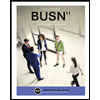
BUSN 11 Introduction to Business Student Edition
Business
ISBN:9781337407137
Author:Kelly
Publisher:Cengage Learning
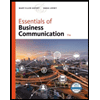
Essentials of Business Communication (MindTap Cou...
Business
ISBN:9781337386494
Author:Mary Ellen Guffey, Dana Loewy
Publisher:Cengage Learning
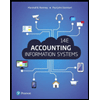
Accounting Information Systems (14th Edition)
Business
ISBN:9780134474021
Author:Marshall B. Romney, Paul J. Steinbart
Publisher:PEARSON
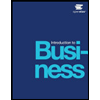
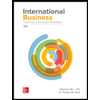
International Business: Competing in the Global M...
Business
ISBN:9781259929441
Author:Charles W. L. Hill Dr, G. Tomas M. Hult
Publisher:McGraw-Hill Education
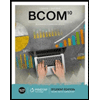
Recommended textbooks for you
 BUSN 11 Introduction to Business Student EditionBusinessISBN:9781337407137Author:KellyPublisher:Cengage Learning
BUSN 11 Introduction to Business Student EditionBusinessISBN:9781337407137Author:KellyPublisher:Cengage Learning Essentials of Business Communication (MindTap Cou...BusinessISBN:9781337386494Author:Mary Ellen Guffey, Dana LoewyPublisher:Cengage Learning
Essentials of Business Communication (MindTap Cou...BusinessISBN:9781337386494Author:Mary Ellen Guffey, Dana LoewyPublisher:Cengage Learning Accounting Information Systems (14th Edition)BusinessISBN:9780134474021Author:Marshall B. Romney, Paul J. SteinbartPublisher:PEARSON
Accounting Information Systems (14th Edition)BusinessISBN:9780134474021Author:Marshall B. Romney, Paul J. SteinbartPublisher:PEARSON
 International Business: Competing in the Global M...BusinessISBN:9781259929441Author:Charles W. L. Hill Dr, G. Tomas M. HultPublisher:McGraw-Hill Education
International Business: Competing in the Global M...BusinessISBN:9781259929441Author:Charles W. L. Hill Dr, G. Tomas M. HultPublisher:McGraw-Hill Education

BUSN 11 Introduction to Business Student Edition
Business
ISBN:9781337407137
Author:Kelly
Publisher:Cengage Learning

Essentials of Business Communication (MindTap Cou...
Business
ISBN:9781337386494
Author:Mary Ellen Guffey, Dana Loewy
Publisher:Cengage Learning

Accounting Information Systems (14th Edition)
Business
ISBN:9780134474021
Author:Marshall B. Romney, Paul J. Steinbart
Publisher:PEARSON


International Business: Competing in the Global M...
Business
ISBN:9781259929441
Author:Charles W. L. Hill Dr, G. Tomas M. Hult
Publisher:McGraw-Hill Education
